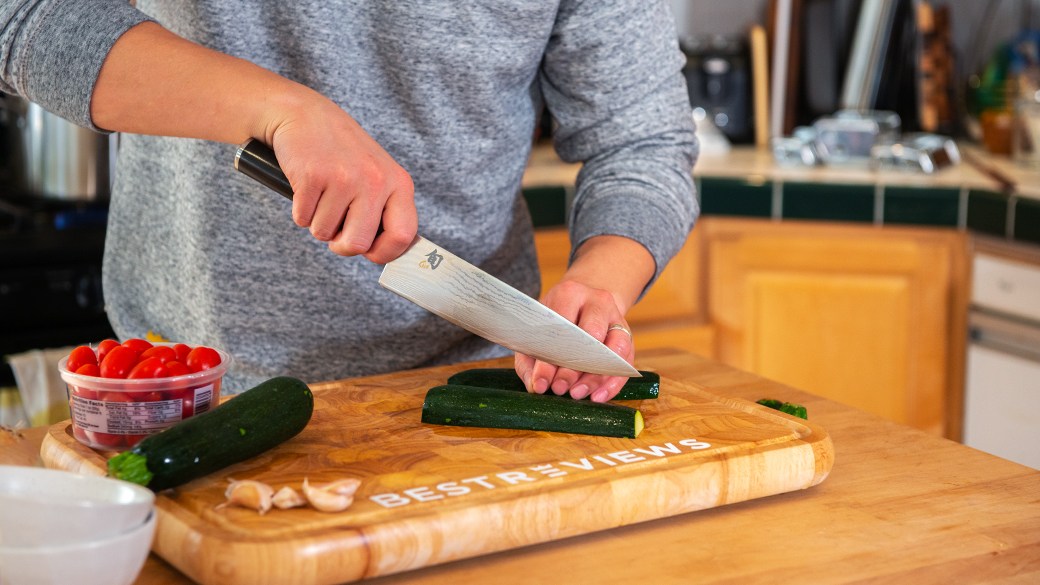When it comes to culinary artistry, understanding how to use a German chef’s knife is essential for both professionals and home cooks alike. This versatile tool is renowned for its precision and durability, making it a staple in kitchens worldwide. In this article, we will explore the fundamental techniques and best practices for using this indispensable kitchen companion.

Understanding the German Chef’s Knife
Before diving into the techniques, it’s crucial to understand what sets a German chef’s knife apart. Known for its robust design, a German chef’s knife typically features a thicker blade and a slightly curved edge, making it perfect for a rocking motion when cutting.
Anatomy of the Knife
Let’s break down the components of a German chef’s knife. The blade, handle, and bolster are the primary elements. The blade is often made from high-carbon stainless steel, ensuring longevity and sharpness. The handle, typically ergonomic, provides a comfortable grip, while the bolster adds balance and safety.
Basic Techniques for Using a German Chef’s Knife
The Proper Grip
A proper grip is foundational to using a German chef’s knife effectively. Hold the knife with your dominant hand, with the thumb and index finger gripping the blade just above the handle. This grip offers control and stability.
The Rocking Motion
The design of the German chef’s knife lends itself to a rocking motion. This technique involves using the curved blade to rock back and forth, allowing for efficient chopping and mincing.
Advanced Techniques for Mastery
Slicing and Dicing
For precise slicing and dicing, use the full length of the blade, starting from the tip and drawing back. This ensures uniformity in your cuts, essential for professional presentation.
Chiffonade and Julienne
When tasked with chiffonade or julienne cuts, align the ingredients carefully and use a swift, confident motion. These techniques are perfect for preparing herbs and vegetables.
Maintaining Your German Chef’s Knife
Sharpening Techniques
Keeping your knife sharp is crucial for performance. Regular honing with a honing steel, as explained in this honing guide, keeps the edge aligned and ready for action.
Proper Storage
Store your knife in a knife block or magnetic strip to protect the blade and prevent accidents. This prolongs the knife’s lifespan and maintains its edge.
Choosing the Right German Chef’s Knife
Blade Thickness and Material
Consider the blade thickness and material when selecting a knife. German knives, as detailed in this blade thickness guide, offer various options to suit different preferences and tasks.
Handle Comfort
The handle should feel comfortable and secure. Test different styles to find one that suits your hand size and grip style.
Historical Context and Evolution
Origins of the German Chef’s Knife
Understanding the history of the German chefs knife enhances appreciation for its craftsmanship and evolution over time.
Comparison with Other Knives
Comparing German knives with others, such as Japanese knives, highlights the unique attributes and uses of each. For more insights, visit this comparison.

FAQ
What is the best way to sharpen a German chef’s knife?
Regular honing with a honing steel and occasional sharpening with a whetstone or professional service is recommended.
Can a German chef’s knife be used for all kitchen tasks?
While versatile, it’s best suited for chopping, slicing, and dicing. For specialized tasks, consider other knife types.
How often should I hone my German chef’s knife?
Honing should be done every few uses to maintain the edge and ensure optimal performance.
In conclusion, mastering how to use a German chef’s knife elevates your culinary skills and enhances the cooking experience. With practice and care, this knife becomes an extension of your hand, transforming kitchen tasks into seamless processes.
This article contains affiliate links. We may earn a commission at no extra cost to you.


